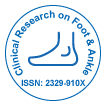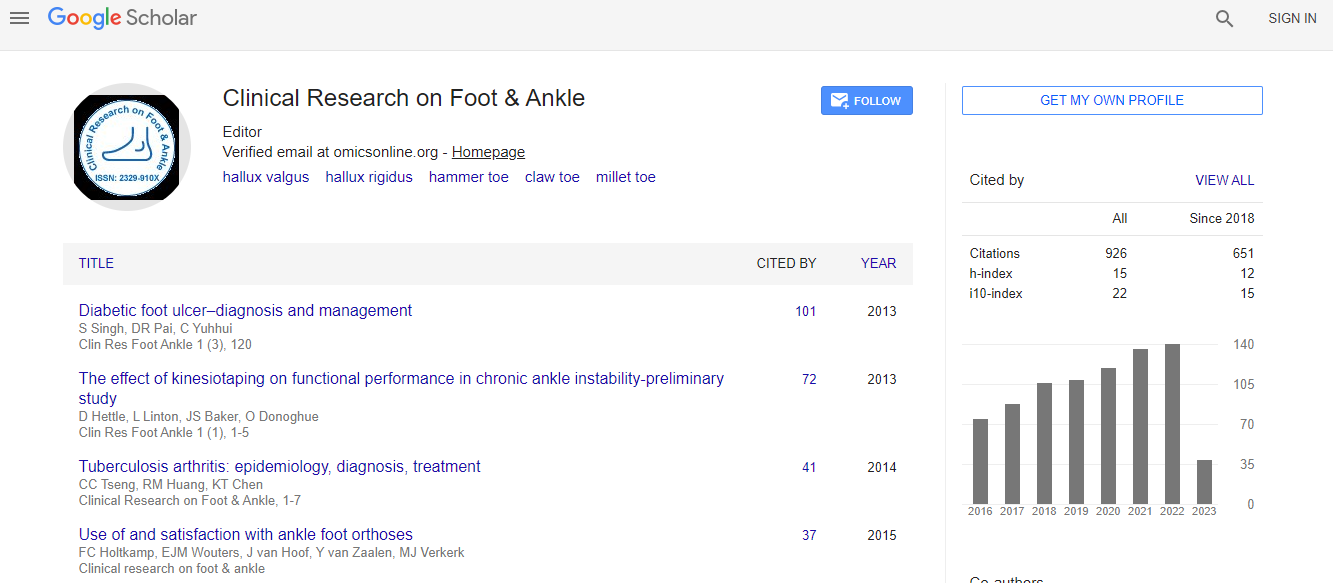Advancing Foot and Ankle Care: The Role and Impact of Podiatric Clinical Trials
*Corresponding Author: Ananya Rao, Department of Physical Therapy, University of Karm Chandra Gandhi, India, Email: ananya.rao@gmail.comReceived Date: Mar 03, 2025 / Accepted Date: Mar 30, 2025 / Published Date: Mar 30, 2025
Citation: Ananya R (2025) Advancing Foot and Ankle Care: The Role and Impactof Podiatric Clinical Trials. Clin Res Foot Ankle, 13: 634.
Copyright: © 2025 Ananya R. This is an open-access article distributed under theterms of the Creative Commons Attribution License, which permits unrestricteduse, distribution, and reproduction in any medium, provided the original author andsource are credited.
Abstract
Podiatric clinical trials are integral to the evolution of evidence-based care in foot and ankle health, shaping diagnostic, therapeutic, surgical, and rehabilitative interventions for a wide spectrum of conditions. As the burden of foot and ankle disorders increases due to aging populations, rising diabetes prevalence, and expanding athletic demands, the need for rigorous, targeted research within podiatry becomes increasingly vital. This paper explores the current landscape and historical progression of podiatric clinical trials, examining their contributions to advancing clinical practice, informing guidelines, improving patient-reported outcomes, and expanding multidisciplinary approaches. Through a critical analysis of pivotal trials and emerging areas of research, including wound care, biomechanical innovations, orthotics, minimally invasive surgical techniques, and regenerative medicine, this study underscores how podiatric trials are reshaping standards of care. Moreover, the paper investigates barriers to conducting high-quality podiatric research such as funding limitations, methodological variability, and limited integration into broader clinical research networks and highlights strategies for enhancing trial design, diversity, and translational potential. Finally, the review offers policy and educational recommendations aimed at strengthening the infrastructure and visibility of podiatric clinical trials, ultimately supporting a more equitable and evidence-informed healthcare system for patients with foot and ankle conditions.

 Spanish
Spanish  Chinese
Chinese  Russian
Russian  German
German  French
French  Japanese
Japanese  Portuguese
Portuguese  Hindi
Hindi 
